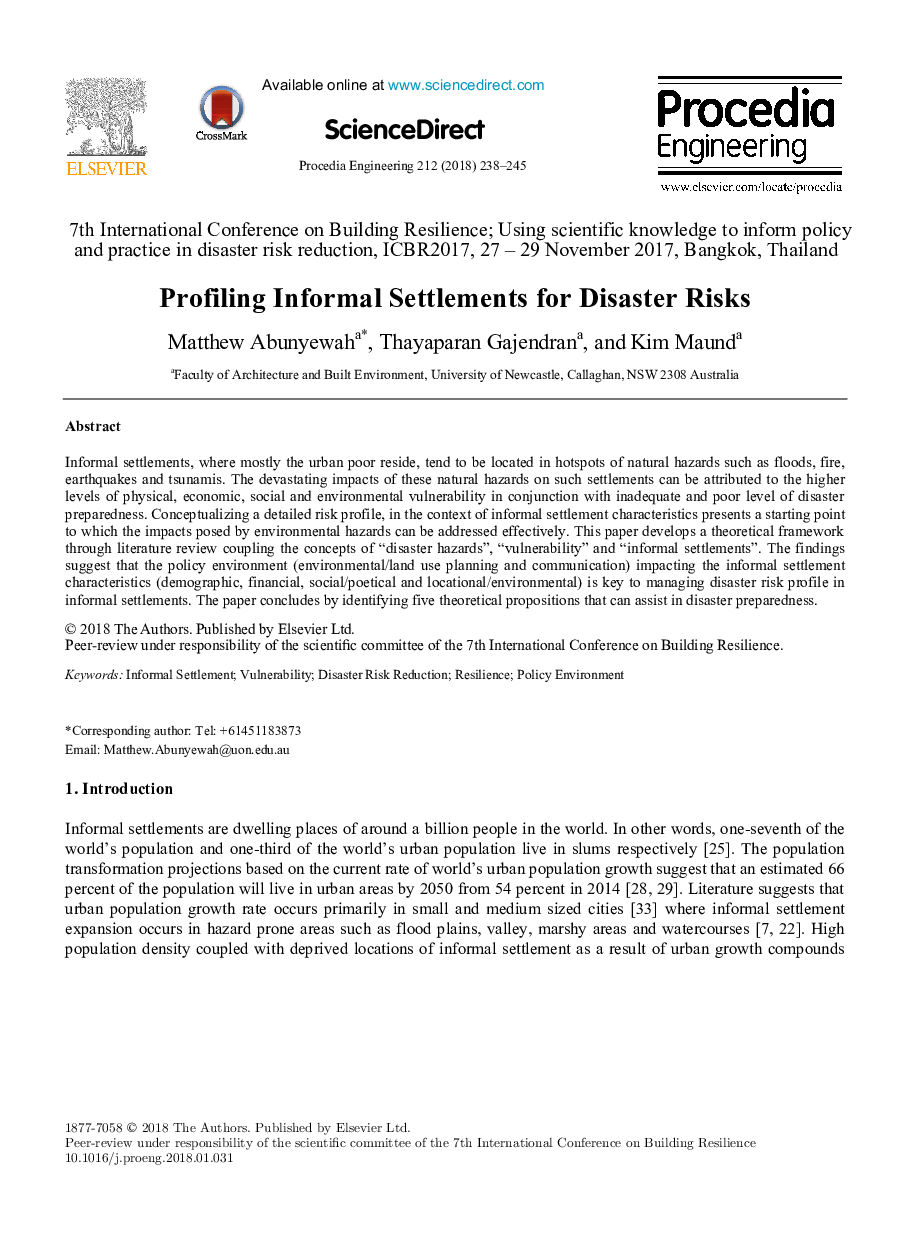| Article ID | Journal | Published Year | Pages | File Type |
|---|---|---|---|---|
| 7225929 | Procedia Engineering | 2018 | 8 Pages |
Abstract
Informal settlements, where mostly the urban poor reside, tend to be located in hotspots of natural hazards such as floods, fire, earthquakes and tsunamis. The devastating impacts of these natural hazards on such settlements can be attributed to the higher levels of physical, economic, social and environmental vulnerability in conjunction with inadequate and poor level of disaster preparedness. Conceptualizing a detailed risk profile, in the context of informal settlement characteristics presents a starting point to which the impacts posed by environmental hazards can be addressed effectively. This paper develops a theoretical framework through literature review coupling the concepts of “disaster hazards”, “vulnerability” and “informal settlements”. The findings suggest that the policy environment (environmental/land use planning and communication) impacting the informal settlement characteristics (demographic, financial, social/poetical and locational/environmental) is key to managing disaster risk profile in informal settlements. The paper concludes by identifying five theoretical propositions that can assist in disaster preparedness.
Related Topics
Physical Sciences and Engineering
Engineering
Engineering (General)
Authors
Matthew Abunyewah, Thayaparan Gajendran, Kim Maund,
